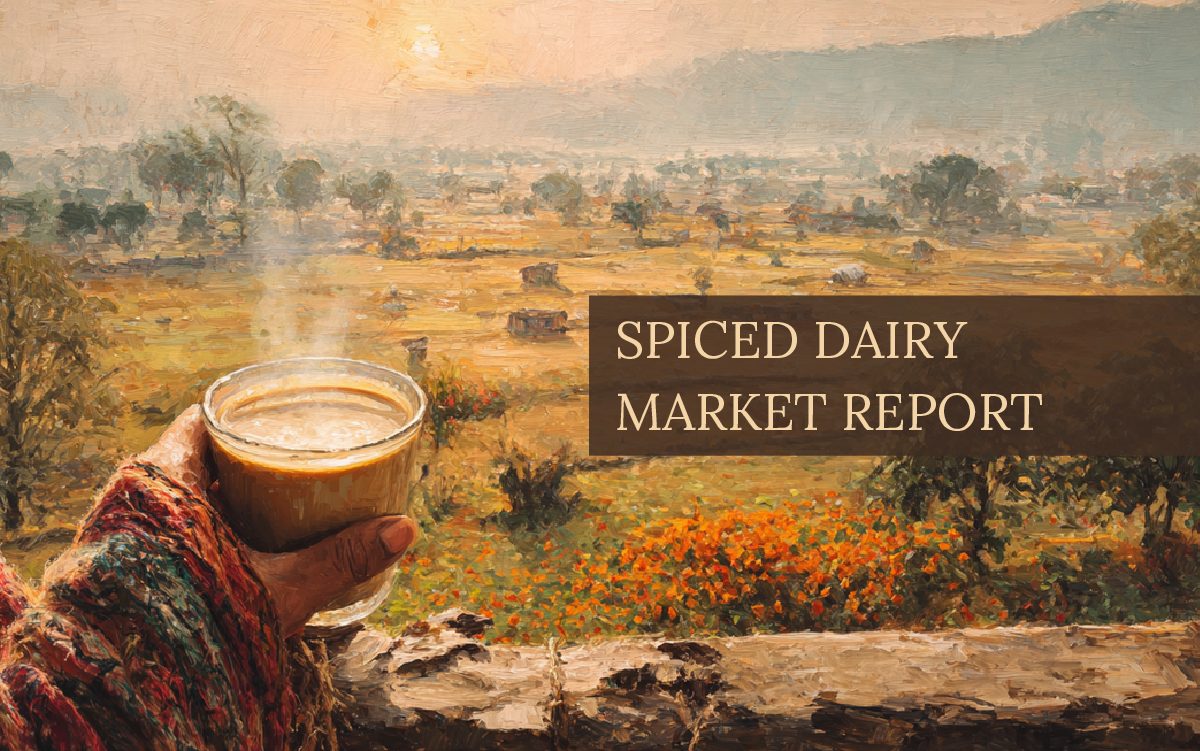
We’ve been taught to think of dairy as plain and predictable. But in today’s aisle, you’ll notice cinnamon, cardamom, turmeric, spices with centuries of history, that are now building the category’s future.
The market sits somewhere in the middle: between broad flavored milk and functional spiced niches. It offers both warmth and a healthy plus. Not necessarily a novelty, but a comfort with a purpose.
Dairy has always been associated to comfort. I remember as a kid, I would always have a tall glass of milk as a “goûter” which is basically the equivalent of a snack after school. For decades, we have been used to vanilla, chocolate, or strawberry. Now, consumers like myself are looking for something deeper, more complex when drinking dairy. Chili and hot spices? Sure, why not. But will this purchase turn into a habit? I don’t think so. This is where more familiar and comforting spices come into play. Eggnog during Christmas time is only one example of how we keep going back to comforting and familiar tastes.
Cinnamon and turmeric calm more than they surprise. The dairy aisle is now a tribute to cultural depth. Yogurts are not only promoting more protein, they also sell health through spice: turmeric for balance, ginger for gut peace. Flavor makes the benefit believable.
But none of this is a new. Around the world, spice and milk have always been a thing. Mexico’s atole agrio, Central Asia’s salty ayran, India’s golden milk, each blended comfort with care. What looks “innovative” here in the US is really a rediscovery, not a reinvention.
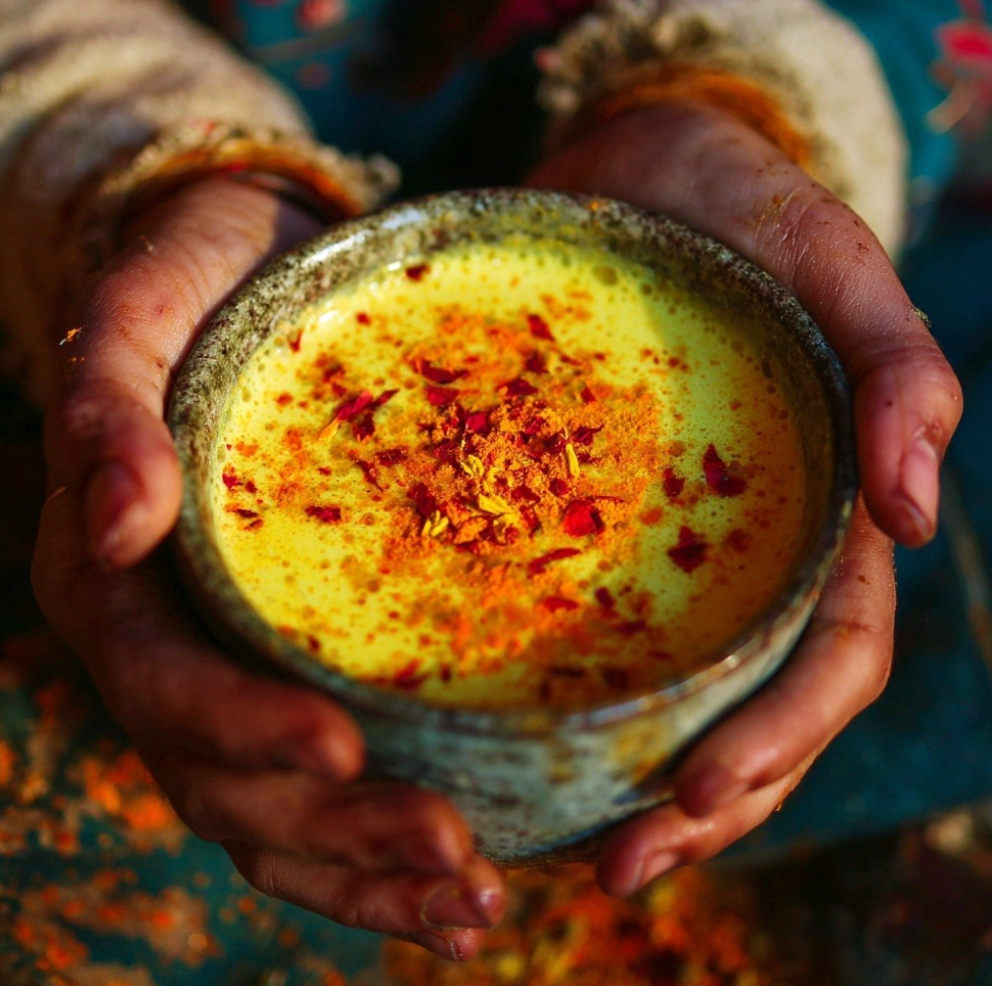
A turmeric latte, the Western heir to Haldi ka Doodh.
North American flavored milk continues to expand, on pace to reach over $8 billion by the end of this year.
Yet, broad “spicy dairy” grows at just 3.4% year after year, and turmeric milk at 5.5% CAGR.
The pattern is the following: functional formats command a premium.
And the lesson is simple: consumers will pay more for a product that delivers both a story of cultural encounter, and benefit.
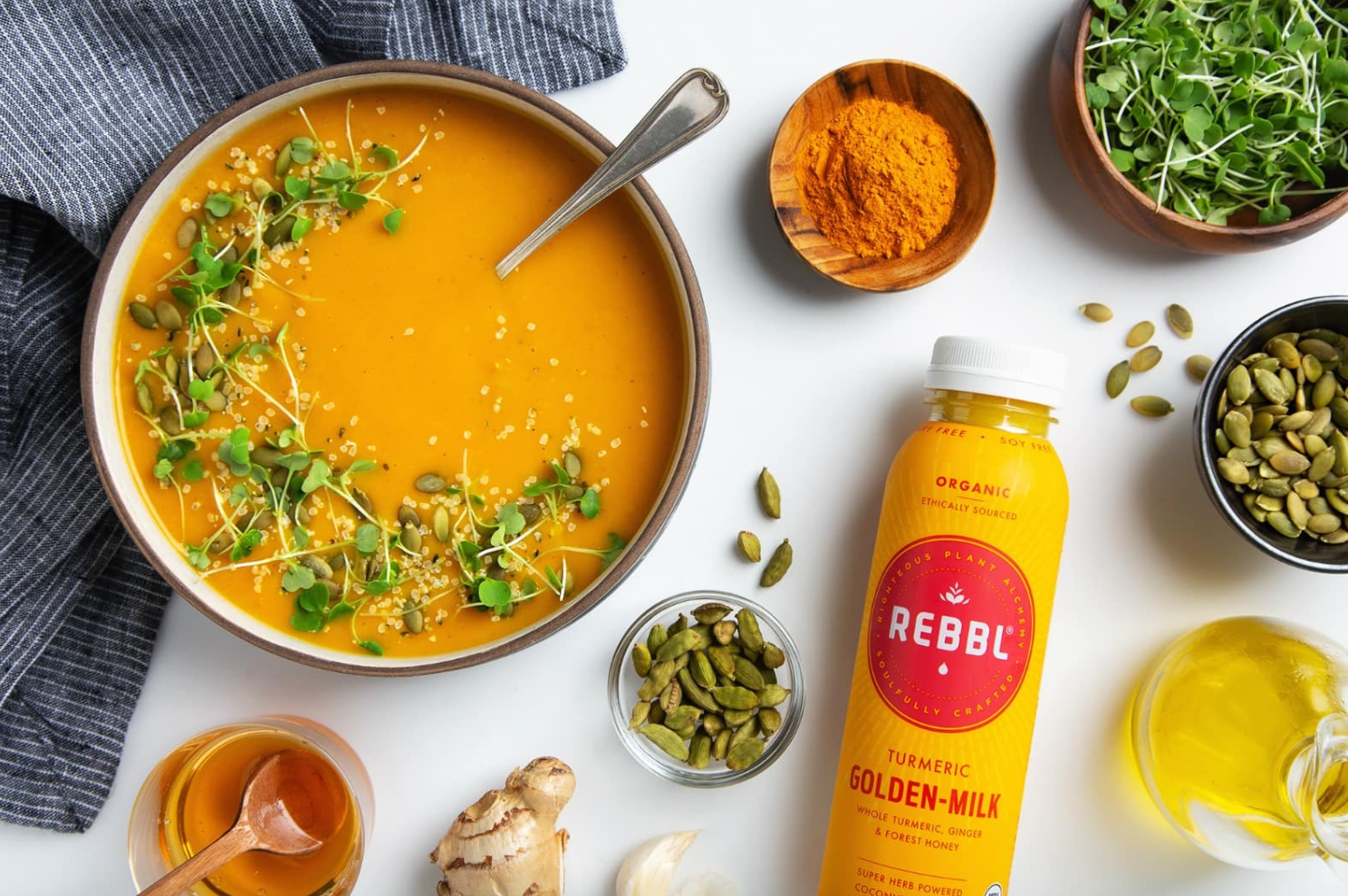
Oat chai lattes, turmeric kefirs… spiced dairy and plant-based drinks now occupy prime refrigerator real estate.
Rebbl, Lifeway, and Good Karma… proof that “comfort with function” has already become a category.
Look at instant chai. Once a niche import, it’s now found in airports and grocery coolers. David Rio’s rise shows why: careful sourcing, organic certification, and an honest attempt to preserve tradition while meeting modern convenience. The brand’s growth proved that complexity survives scale when you start with ingredient integrity.
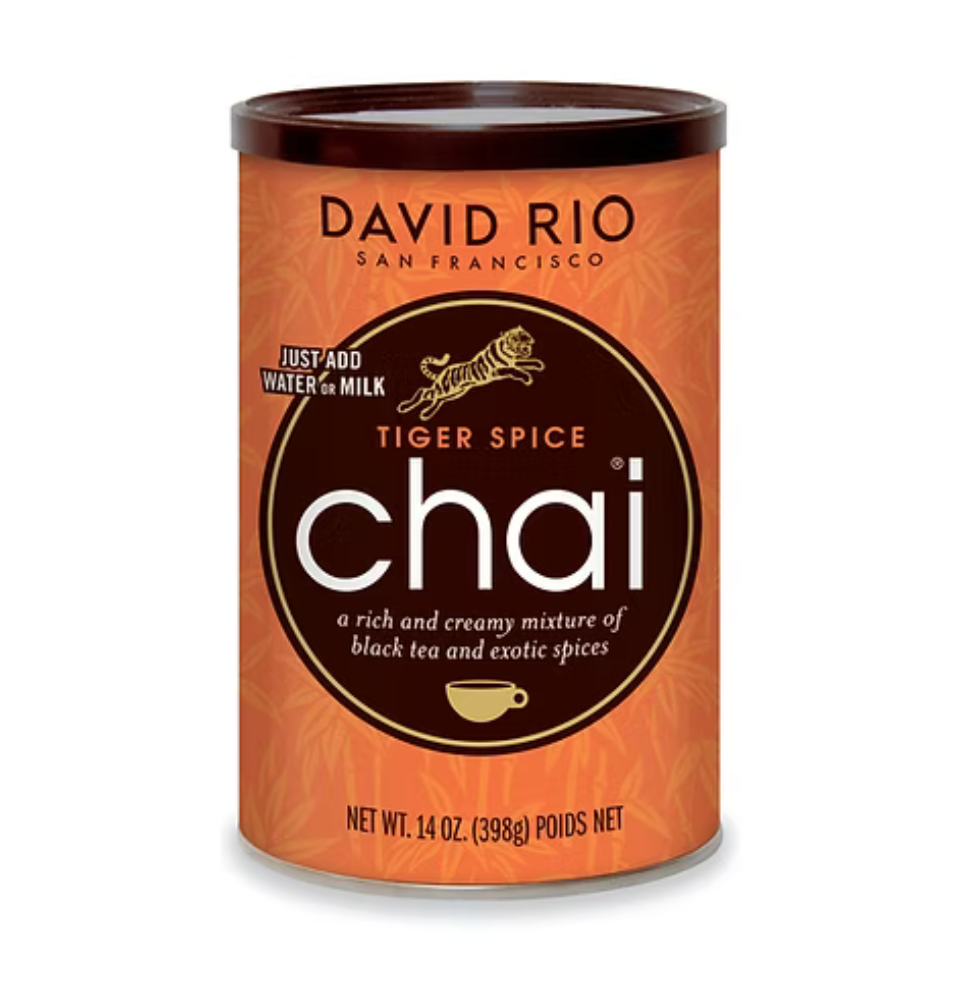
Proof that authenticity scales, if you start with the right ingredients.
The company’s decision to source USDA Certified Organic spices and prioritize rigorous research and development reflects a necessary industry standard for entering the premium spiced beverage space. The success of this model was validated when David Rio was selected for Eurest’s 2024 Business Partner Accelerator program, a move that recognizes the brand’s high-growth trajectory and scalability. This case confirms that authenticity and quality are non-negotiable foundations for capturing the discerning North American consumer.
The path forward isn’t to chase every spice. It’s to anchor flavors to proven consumer needs.
Functional Stacking: Given that 42% of recent North American yogurt launches prioritized high protein content, the most effective path for new spice profiles is to layer them onto these proven functional bases. Comfort spices like Cardamom or Cinnamon should enhance high-satiety, high-protein products, maximizing the consumer’s perception of a complete, healthful indulgence.
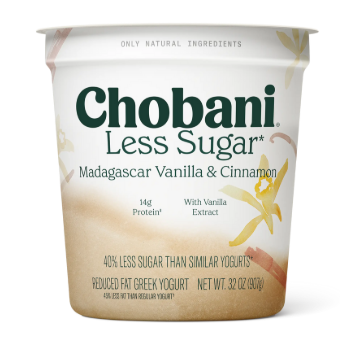
Layering familiar spices onto proven protein platforms. Chobani’s cinnamon yogurt shows how comfort can drive functional appeal.
Plant-Based Flavor Masking: The rapid rise of dairy alternatives, particularly plant-based kefir (projected to grow at a 5.4% CAGR) , presents technical challenges. Strong, resonant spices (e.g., turmeric, ginger) must be precisely formulated to mask the inherent vegetal or nutty off-notes of bases like almond or coconut while strictly adhering to regulatory definitions of “natural flavor” derived from spice.
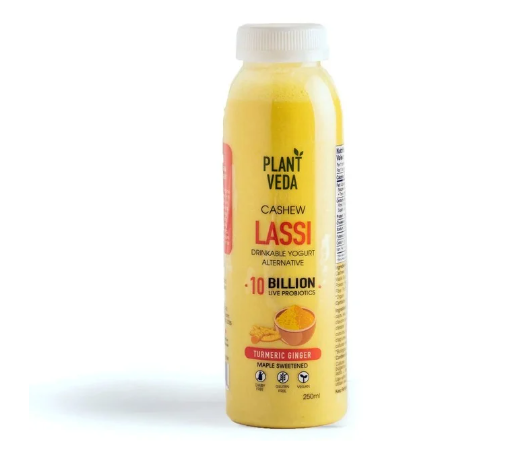
Example of a plant-based lassi alternative leveraging turmeric and ginger for flavor masking and functional positioning.
Integrating robust spice flavors into dairy matrices requires mitigating critical sensory chemistry challenges. Volatile flavor compounds, such as 1,8-Cineole in cardamom or Cinnamaldehyde in cinnamon, are susceptible to oxidation and degradation during thermal processing (e.g., pasteurization) and storage, particularly in lower-pH environments like yogurt and kefir. Flavorists often rely on microencapsulation or stabilization techniques for oleoresins and essential oils to maintain flavor integrity and shelf stability over time.
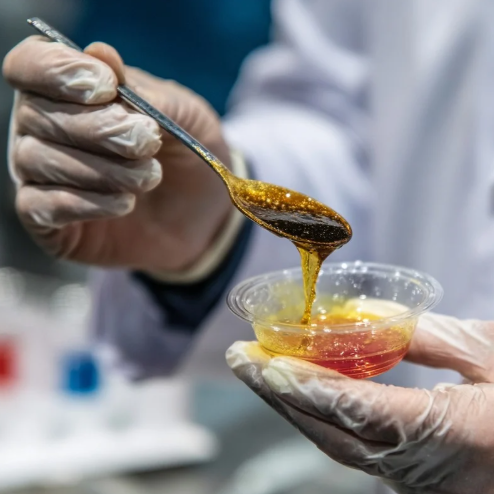

Encapsulation isolates sensitive flavor molecules within a barrier matrix, ensuring stability through heat, pH shifts, and storage.
Regulatory compliance in the United States must strictly adhere to FDA guidelines:
FDA Flavor Definition & GRAS Status: The FDA mandates that flavorings must be explicitly derived from natural sources, such as a spice, fruit, dairy product, or fermentation product thereof, to be labeled as a “natural flavoring”. All components used must be Generally Recognized As Safe (GRAS). The term “spice” itself is defined as an aromatic vegetable substance whose significant function is seasoning, not nutrition.
Dual-Function Labeling: If a spice ingredient functions as both a color and a flavoring agent (e.g., turmeric or paprika), it must be declared on the label as “spice and coloring” unless its common or usual name is declared. Manufacturers must confirm that their use of spice extracts and oils aligns precisely with these labeling expectations to avoid regulatory action.
With that being said, there are really 2 major trends that I envision for flavors in the spiced dairy market. We have familiar and nostalgic flavors slowly turning premium with some added benefit, and we have the increasing popularity of LTO’s that is slowly taking over everyday flavors.
Familiar Plus
Cinnamon done right. Saigon cinnamon with toasted sugar and a clean vanilla backbone. Works in high-protein yogurt and creamers without fighting acid.
Cardamom for grown-ups. Green cardamom with a soft citrus lift. Pair with pistachio or pear in Greek yogurt; keep dosage low to avoid “soapy” notes.
Ginger and fresh. Blend Jamaican ginger top-notes with a rounded cooked-ginger body for RTD “digestive” cues. Honey or yuzu can soften it.
Mexican chocolate, not “cocoa + cayenne.” True canela, a bit of ancho, and real cocoa nib character for frozen novelties and protein puddings.
Seasonal Turned into All Year Long
Chai beyond pumpkin season. Clove stays quiet while black tea astringency sits under milk fat. We already tend to see it as “everyday spiced latte,” instead of a holiday LTO.
Horchata adjacent. Cinnamon-rice notes and toasted coconut or almond for lactose-free lines. Keep sweetness down; let starch give body.
Mango + chile. 2025 has been mango year. While chili has often been by its side, swap it for guajillo warmth and add cardamom seed to bridge fruit and cream in lassi-style yogurts.
Hear Me Out
Black cardamom smoke for savory skyr dips and “chef” cream cheese. One step and you’re in snack boards and meal kits.
Rose-sesame for limited runs in cultured dairy; floral stays dry, never perfumey, backed by tahini praline notes.
thank you for reading, and happy diwali!